For non-Spanish speakers:
You can translate this blog using Google translator widget. And you can always comment in your language, of course!
Yellow texts are in English
montgomery clift
montgomery clift
Queridos Hijos de la Luz:En estos momentos, estoy implicado en los inflexibles resultados de un error legal. Toda [esta] angustia resulta de no haber manifestado por escrito mis cambios o pensamientos en el guión cuando lo leí, de modo que, el día que acudí ante las cámaras perdí todo derecho de aprobación.Tengo el corazón realmente destrozado. El diálogo que me deja atónito no es difícil de aprender... ¡Oh Dios...!Este Wechsler es increíble. Obliga a casi todo el que contrata a perder el tiempo hablando o escribiendo a sus abogados. A distancia, resulta divertido. Nunca había visto tantas caras tensas cerca de mí. Quisiera haber muerto. ¡Augusta, Kevin, queridos míos! Y si James Kevin [el hijo de seis meses de los McCarthy] se encuentra alguna vez en su vida con un L. Wechsler, que escupa sobre él y le arroje la maldición de los McCarthy. Ésas son mis penas. No tengo buenas noticias. El viejoMONTGOMERY.
En la carta, de las numerosas que Montgomery Clift envió a sus amigos Augusta y Kevin McCarthy, relata los problemas del guión de The Search (Los ángeles perdidos, 1948).
Lazar Wechsler era el productor de la película e hijo de uno de los guionistas, David Schsler. El guión que se rodó finalmente se basaba en las anotaciones e improvisaciones de Monty que modificaban sustancialmente el guión original. Paradojas de la vida, la película obtuvo un Oscar en el apartado de guión original que fue a parar a
Richard Schweizer y
David Wechsler. Actualmente Montgomery Clift aparece como
autor no acreditado del guión (del que se premió).
La carta fue escrita el 14 de septiembre de 1947, tal día como hoy. Monty tenía
26 años pero estaba a un mes de cumplir los 27 años.
Hace
62 años.

En la Biblioteca de la Universidad de Yale se conserva un archivo que contiene la colección de documentos, correspondencia y fotos de James Jones, el autor de la novela De aquí a la eternidad (From here to eternity). Características:Yale Universit Beinecke rare book and manuscript Library Yale Collection of American Literature.JAMES JONES PAPERS
YCAL MSS 23
by Tina Evans
New Haven, Connecticut
April 1986Last Updated: February 1998Extent Total Boxes: 43Other Storage Formats: oversizeLinear Feet: 18.75
Copyright � 2001 by the Yale University Library.Acerca de su novela y Montgomery Cift, la información que nos llega es la siguiente:
Series I,Writings"Fragments ofFrom Here to Eternity, (1951) are in Box 1, folders 1-18. In 1953From Here to Eternity was made into a movie and Jones was hired to write the screen treatment. He withdrew from the project because of disagreements with Harry Cohn of Columbia Pictures. The section Screenplays, Box 28, folders 340-43, contains a copy of his preliminary film treatment and notes".Series II,Correspondence"Although Jones did not rely upon literary agents, he did depend upon Ned Brown of MCA Artists Agency Ltd., to handle negotiations with Columbia Pictures concerningFrom Here to Eternity (Box 36, folders 526-29). Ned Brown arranged for Jones to do a preliminary screen treatment, but the project was later turned over to Dan Taradash. He remained friendly, however, with Brown and discussed the possibility of a dramatization of the stockade scene inFrom Here to Eternity, the choice of Montgomery Clift to play the part of Prewitt, and provided general news concerning the Handy Writing Colony. When the filming ofFrom Here to Eternity began, Brown arranged for Jones to work on a script for Norma Productions so that he could remain in Hollywood. There are also letters from Harry Cohn of Columbia Pictures detailing character development in the film and possible problems with the Army. In Box 34, folder 488 are two letters from Montgomery Clift.
A good deal can be learned about Jones's early life from his correspondence with family and friends. In Box 35, folders 512-19, are letters to and from brother George "Jeff" Jones. These letters began in 1939 when Jones first entered the Army and are full of details concerning military life, his classes at the University of Hawaii, and his attitude toward women. He would later draw upon these experiences to writeFrom Here to Eternity. Jones began writing both poetry and short stories during his enlistment and frequently discussed his work with Jeff, outlining his plans for a writing career early in 1943. There are no letters from the period between 1945 and 1949, although there are a few letters from 1950-51 in whichFrom Here to Eternity is discussed.
Correspondence with Aunt Mollie Haish dating back to 1926 can be found in Box 35, folders 499-502. Mollie Haish's letters provide a great deal of family news, particularly concerning Jones's younger sister Mary Ann. She also offered encouragement while he was writingFrom Here to Eternity.
Harry and Lowney Handy played a very important part in Jones's life from 1943 until 1957. Early in 1943, when he was AWOL, Lowney Handy interceded with the Army and helped to arrange an honorable discharge. More importantly, she recognized his potential as a writer. For fourteen years she and her husband supported Jones financially and emotionally. While he wrote "They Shall Inherit the Laughter" andFrom Here to Eternity, he traveled throughout the country in a jeep and trailer the Handys purchased for him. Harry Handy's correspondence, frequently addressed to both Jones and Lowney Handy, who often joined him in his travels, concerns insurance matters, home improvements, and money. Upon the completion ofFrom Here to Eternity, Jones returned to Illinois and assisted in the formation of the Handy Writing Colony in Marshall, Illinois. The letters from Lowney Handy cover the same subjects as those of her husband, although she also wrote in detail about other colony members such as Willard Lindsay and Don Sackrider. Jones corresponded with both Lindsay and Sackrider". Para consultar todo el archivo ver aquí.
Su carrera comprende 17 títulos entre 1948 y 1966. Trabajó con los grandes directores (Hawks, Hitchcock, Stevens, Zinnemann, Kazan, Huston, Wyler) y las grandes estrellas (Lancaster, Marilyn Monroe, Katherine Hepburn, Brando, Wayne, Elizabeth Taylor especialmente) de entonces.
Su carrera comprende 17 títulos entre 1948 y 1966. Trabajó con los grandes directores (Hawks, Hitchcock, Stevens, Zinnemann, Kazan, Huston, Wyler) y las grandes estrellas (Lancaster, Marilyn Monroe, Katherine Hepburn, Brando, Wayne, Elizabeth Taylor especialmente) de entonces.
Su carrera comprende 17 títulos entre 1948 y 1966. Trabajó con los grandes directores (Hawks, Hitchcock, Stevens, Zinnemann, Kazan, Huston, Wyler) y las grandes estrellas (Lancaster, Marilyn Monroe, Katherine Hepburn, Brando, Wayne, Elizabeth Taylor especialmente) de entonces.
Lyric
Say, where did I see this guy?
In red river?
Or a place in the sun?
Maybe the misfits?
Or from here to eternity?
Everybody say, is he all right?
And everybody say, whats he like?
Everybody say, he sure looks funny.
Thats...Montgomery Clift, honey!
New York, New York, New York, 42nd street
Hustlers rustle and pimps pimp the beat
Monty Clift is recognized at dawn
He aint got no shoes and his clothes are torn
I see a car smashed at night
Cut the applause and dim the light
Monty's face is broken on a wheel
Is he alive? can he still feel?
Everybody say, is he all right?
And everybody say, whats he like?
Everybody say, he sure looks funny.
Thats...Montgomery Clift, honey!
Nembutol numbs it all
But I prefer alcohol
He said go out and get me my old movie stills
Go out and get me another roll of pills
There I go again shaking, but I aint got the chills





.-+albornoz+(4)+BLOG.jpg)

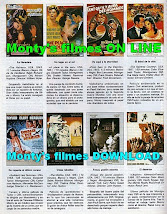














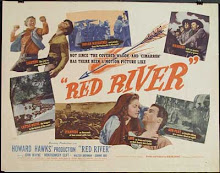
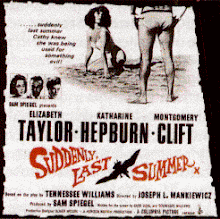




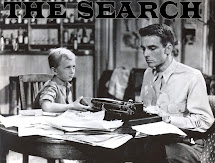

2.jpg)
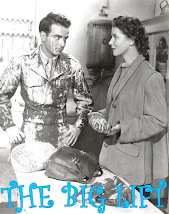.jpg)
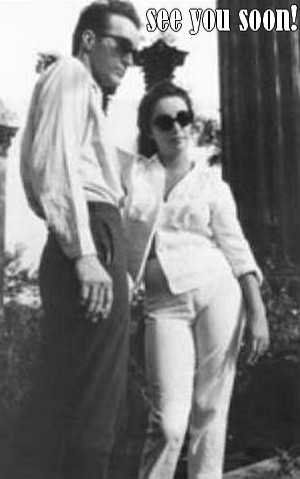

.jpg)

